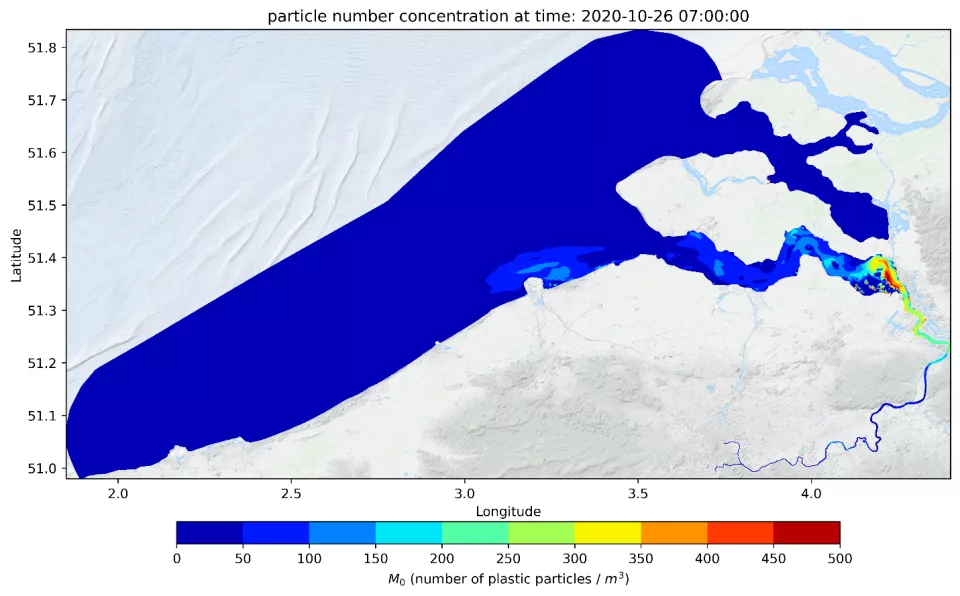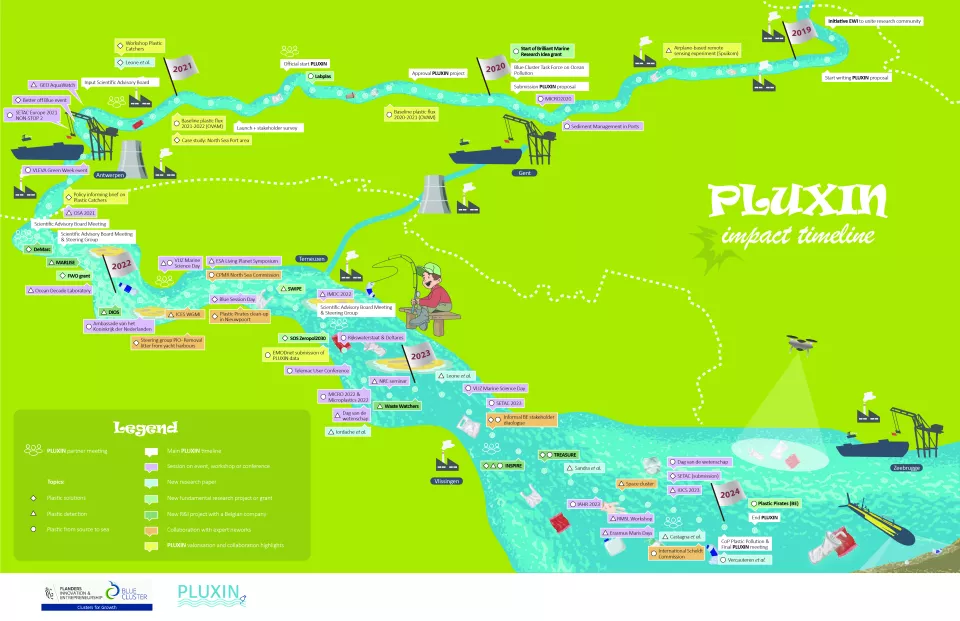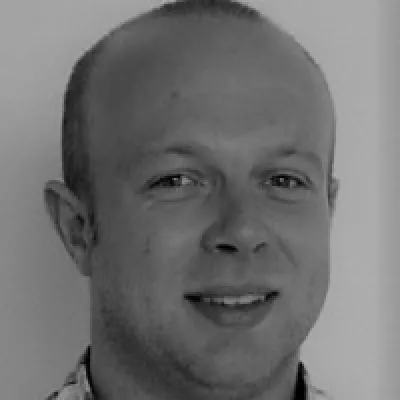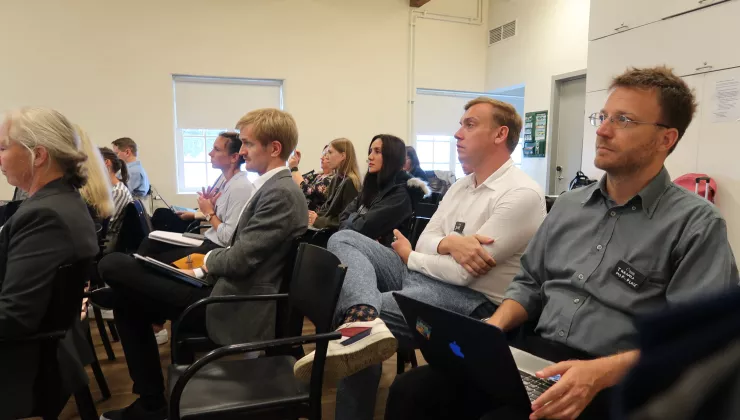Plastic particles are omnipresent in our waterways
Plastic waste in our waters mainly concerns microplastics. The quantities of these microscopically small particles are an order of magnitude larger than the larger litter. This form of plastic accumulates in riverbeds and on their banks.
Furthermore, estuaries such as the Scheldt River are not sources of plastic to the open sea, but rather settling places. In turn, the sectors Ostend-Zeebrugge, Vlissingen-Bath and upstream of Antwerp are hotspots for these plastic particles.
Hotspots for plastic waste
A first observation is that plastic was found at each of the 356 sampling sites (20 locations, spread across the Scheldt, IJzer, Ghent-Terneuzen Canal and the ports of Ostend, Nieuwpoort, Vlissingen and Antwerp). The smaller the 'microplastic' (examined for size class 0.1-5mm), the more numerous it is. This corresponds to the gradual fragmentation of larger litter in rivers and seas into small particles.

Most of the plastics also do not appear to end up in the open sea. It moves up and down with the tidal wave, moving net inland rather than seaward. So, contrary to what is often stated in general terms, rivers are not always sources of plastic. In lowland rivers like the Scheldt - with a large difference between saltwater intrusion at high tide, and river water discharge - it is even rather the other way round.
At a more detailed level, the researchers discovered three hotspots of micro-plastic: the nearby coastal area between Ostend and Zeebrugge; the tidal area between Vlissingen and Bath; and the Scheldt upstream from Antwerp. A hotspot for large litter (>5mm) is located off the port of Antwerp (727g/1,000m3) and the Ghent-Terneuzen Canal (841g/1,000m3).

A clear cause for these hotspots at the mentioned locations cannot be determined with certainty. The researchers suspect an interplay of factors is at play here, with local sources of pollution, further dispersed and influenced by strong tidal action. The latter ensures that the plastic remains trapped in the estuary. It hardly reaches the open sea, if at all, which contradicts what happens in many other rivers worldwide.
Plastic accumulates in riverbeds and on banks
Another observation is that plastic gradually accumulates in the bottom of rivers, and on banks. The bottom of the Scheldt, the port of Ostend and that of Nieuwpoort contain 2,000-4,000 microplastics per kg dry weight. Logically, light plastics (e.g. polypropylene - PP) are more numerous in surface waters, and heavier polymers (e.g. polyethylene terephthalate - PET) are better represented in soils. Polystyrene, in turn, is ubiquitous, both at the surface and in sediments.
The uniqueness of this study is that never before researchers have looked at both macro- and microplastics on such a scale. We also investigated whether lighter plastics could sink by becoming overgrown or coalescing with fine sediment. There are indications for this, but more research is required.

Gert Everaert
The ecological impact of plastics was not part of the PLUXIN project. It is therefore unclear whether the identified amount of microplastics (1,200-5,000 particles/kg dry weight soil) negatively impacts the ecosystem. Depending on the reference used, the threshold may or may not have been exceeded (Everaert et al. 2018: 540 particles/kg; Besseling et al. 2019: 220,000 particles/kg).
So what's next?
This study provides a solid basis for working towards an informed solution. For instance, the results are particularly useful to adjust existing action plans, the impact of which can be determined with follow-up measurements. These follow-up measurements will also be further automated, or supported by citizen science, to ensure an influx of solid data.
In any case, pollution prevention remains the essence. Cleaning up macroplastics in waterways is possible, but not useful as long as litter continues to flow into rivers. Capturing microplastics on a large scale, once in the system, seems to be a hopeless task.
Based on the knowledge obtained, a follow-up project has now been launched in which Belgian companies are building and testing a plastic capture system. Innovative detection systems for plastic litter, both above (drones, satellite images) and underwater, have also been integrated.

Lisa Devriese
In addition, the PLUXIN project shows how fruitful cooperation can be between research institutions, companies and government in pursuing solutions to grand societal challenges such as plastic pollution. The developed protocols for sampling and analysing plastic, the automatic detection of plastic using cameras and drones, and the modelling work set up and developed within PLUXIN are the foundations for further elaborating the plan of action. The project partners also evaluated more than 90 existing systems to remove plastic litter from the aquatic environment as efficiently as possible.
Do you want to know more about the results of the project? Please contact Gert Everaert (VLIZ).
Background
PLUXIN (Plastic Flux for Innovation and Business Opportunities in Flanders) is a three-year research project initiated by VLIZ (coordinator), Ghent University, KU Leuven, University of Antwerp and VITO, together with 13 companies. The project is facilitated by Blue Cluster with financial support from VLAIO (Flanders Innovation & Entrepreneurship).
The project's final internal advisory board took place on 23 January 2004. During the meeting the partners discussed the results of the project for a final time. It was a spontaneous and constructive conversation, and at the end, everybody was full of praise about the impact process that had beencompleted together. To be continued...


